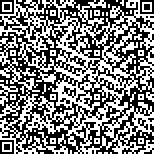| 摘要: |
| 应用单细胞凝胶电泳(SCGE)方法,对超低温冷冻保存的真鲷精子DNA的损伤状况进行了检测研究。针对研究对象,在实验过程中对传统的碱性单细胞凝胶电泳在铺胶方法、电泳条件等进行了改进。对精子细胞进行预处理,在碱性电泳液中使核DNA双链解链变性后电泳,EB染色10min后,在荧光显微镜下观察,每次随机观察50个左右的核DNA。结果表明,对荧光显微镜下观察到的精子核按彗尾长度及荧光强度划分等级,出现损伤的精子核DNA的损伤程度主要为轻度损伤和中度损伤,很少见有完全损伤的真鲷精子核。对比真鲷冷冻精液与新鲜精液的精子DNA的损伤状况,表明仅用30%DMSO冷冻精子DNA损伤状况与鲜精差异显著(P>95%),其他冷冻方法保存的精子与鲜精差异不显著(P>95%)。 |
| 关键词: 超低温冷冻保存 真鲷精子 DNA损伤 单细胞凝胶电泳 |
| DOI: |
| 分类号: |
| 基金项目:国家高技术研究发展计划(863计划)课题,2003AA603510 |
附件 |
|
| CRYOPRESERVATION CAUSED SPERM DNA DAMAGE IN RED SEA BREAM PAGROSOMUS MAJOR AND ITS DETECTION |
|
XU Xi-Zhang,DING Fu-Hong,LI Jun
|
|
1.Institute of Oceanology, Chinese Academy of Sciences, Qingdao, 266071;2.Graduate School, Chinese Academy of Sciences, Beijing, 100039
|
| Abstract: |
| Sperm cryopreservation is an important method for germplasm conservation. However, the method may cause changes of DNA structures and components, which have been widely concerned by scientists. The change of DNA structure may damage the fish sperm quality and result in defects in its descendant. Therefore, how to keep the sperm intact and how to avoid the damage by cryopreservation becomes an important issue. To answer the questions, we carried out a test to reveal the effect of cryopreservation on the sperm’s nuclear DNA stability. Red sea bream is an economically valuable fish. The cryopreservation of the sperms of red sea breams is extremely significant; and it is necessary to find a simple and valid method to examine the damage of the sperms. Comet assay, also known as single cell gel electrophoresis (SCGE), is a highly sensitive method to analyze induction and repair of DNA strand breaks, and oxidative DNA lesions, particularly useful for microbeam experiment, and needs only tiny sample amount. In alkaline version of this assay, diluted suspension of cells mixed with low melt agarose is lysed at pH 10 to release the nucleoids. The nucleoids are subsequently incubated in an alkaline electrophoresis buffer to facilitate denaturation, unwinding and the exposure of alkali-labile sites. The denatured DNA was then electrophoresed; and the degree of the DNA damage was estimated in the comet tail pattern formed by the DNA nuclei movement in the electricity field.
In this paper, we used SCGE to study DNA stability of red sea bream spermatozoa by measuring alkali-induced DNA strand breaking, to find out under cryopreservation whether any hereditable materials were damaged or not. The SCGE examines outside harm to cell nuclear DNA, and widely used to various cell nucleus DNA, including mammalian sperms, now fish. Pretreat the sperm (collection, cleaning, freezing, and thaw). Electrophorese and unwind it in the alkaline electrophoresis solution, dye it with EB for 10min, observe it under fluorescence microscope, count the proportion of nuclei with tails in about 50 nuclei at random, then calculate the comet rate. The comet rate is defined as the percentage of the number of nuclei with DNA damaged that would appear in the comet tail, to the total nuclei numbers. Each sample is measured 2–4 times repeatedly. We evaluate the damage and divide them into 5 grades: no damage (G0), slightly damaged (G1), mildly damaged (G2), heavily damaged (G3), and totally damaged (G4). We found that most sperm with DNA damage are in the grades G1 and G2, and few were totally damaged nuclei. The measured comet rates in different cryoprotectant (DMSO) concentrations of 5%; 10%; 18%; 20%; 30% and 30% were: 33.47%±8.95%; 35.91%±19.44%; 48.95%±8.90%; 43.33%±11.19%; 55.80%±38.94%; and 81.99%±19.05% respectively. The comet rate of the fresh sperm was 31.44%±2.68%. Compared with the DNA damage states of red sea bream frozen sperm and the fresh sperm, the result indicates that the frozen sperm DNA in 30% of DMSO had remarkable difference with the fresh sperm (P>95%). |
| Key words: Cryopreservation, Red sea bream sperm, DNA damage, SCGE |
